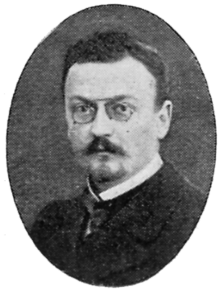Erik Lindberg

Erik Lindberg (1873 in Stockholm, Sweden – 1966) was a sculptor and engraver. He was best known for designing the Nobel Prize medals.
He was the son of Adolph Lindberg, another famous sculptor. Following his father he entered the Ecole des Beaux-Arts in Stockholm in 1893 and obtained a scholarship. This enabled him to spend some years in Paris, from around 1901 to 1902 where he was influenced by modern French medal engravers of that period such as Louis-Oscar Roty, Chaplain, Tasset and Vernon. In 1901 Lindberg was given the task of creating the Nobel medals for Physics, Chemistry, Physiology or Medicine and Literature. The Peace medal was created by Norwegian Gustav Vigeland. According to correspondence between Lindberg and his father, the designs were not quite ready for the first ceremony in 1901; the reverse sides of the medals required approval from the Prize-Giving association, and so the winners were given temporary medals. In November 1901, after lengthy discussions by letter, Lindberg returned to Stockholm to present his ideas in person. However, it wasn't until September the following year the designs were ready and the first winners received their proper prize. In 1915 he received a gold medal at the Panama-Pacific International Exhibition. Many of his works are in the collection of Stockholm Museum.
Sources
- "The Nobel Prize Medals and the Medal for the Prize in Economics". Archived from the original on 2007-10-27. Retrieved 2007-11-14.
- "Erik Lindberg". Archived from the original on 2007-10-23. Retrieved 2007-11-14.